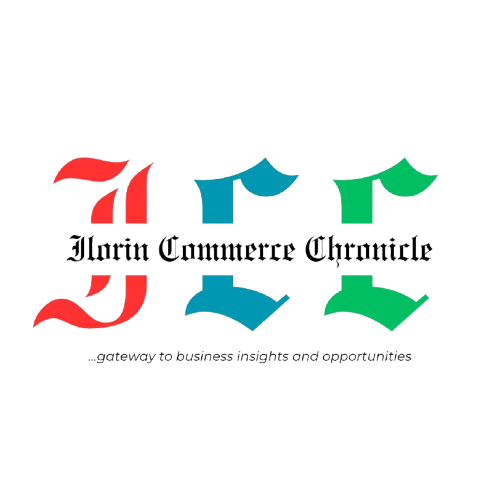How Ancient Beliefs Shape Modern Visualizations
1. Introduction: The Influence of Ancient Beliefs on Modern Visual Culture
Ancient beliefs are the foundational narratives and symbolic systems that civilizations used to interpret the world around them. These beliefs, often rooted in mythology, religion, and ritual practices, have shaped the visual language of human culture for millennia. From the majestic temples of Egypt to the regal depictions of gods in Greek art, these symbols served as a bridge between the divine and the mortal, embedding deep cultural meanings into visual form.
Despite the vast temporal gap, many of these ancient symbols and themes persist and evolve within contemporary visuals—be it in art, branding, entertainment, or digital media. They carry an intrinsic power, resonating with subconscious recognition and emotional response, thus continuing to influence modern design. This article explores this enduring connection, illustrating how ancient symbols are reinterpreted in today’s visual landscape through specific examples and their broader cultural implications.
2. The Origins of Symbolism in Ancient Rituals and Beliefs
a. Ritual Objects and Their Sacred Significance
Objects such as chalices, swords, and altars played central roles in spiritual and sacrificial rituals across ancient cultures. For instance, the chalice in Greek and Roman rituals symbolized divine communion and spiritual sustenance. These ritual vessels, often elaborately decorated, embodied the sacred connection between the divine and human realms. Their visual representations persisted in art and became archetypes for conveying sanctity and authority.
b. Divine Figures and Natural Phenomena
Divine figures in mythologies often represented natural forces, with symbols like thunder embodying Zeus’s wrath in Greek myth. The thunderbolt was not just a weapon but a divine sign of power and authority. Such symbols conveyed complex concepts—power, protection, or divine anger—through simple, recognizable imagery that transcended specific cultures but retained universal appeal.
c. Crowns and Symbols of Power
Crowns have historically signified sovereignty, divine right, and authority. From Egyptian pharaohs to European monarchs, crowns and diadems visually communicated hierarchical status and divine endorsement. Their intricate designs often incorporated symbolic motifs that conveyed strength, legitimacy, and divine favor, establishing a visual language of power that persists today.
3. Transition from Ancient Symbols to Modern Visualizations
a. Reinterpretation in Art, Branding, and Entertainment
Ancient symbols have been continually reinterpreted in various modern contexts. For example, corporate logos often borrow motifs like the laurel wreath or eagle to evoke victory and authority. In entertainment, films and video games frequently incorporate mythological elements—such as gods, divine crowns, or ritual objects—to create immersive worlds that resonate with historical symbolism. These adaptations serve to evoke familiarity and emotional depth, bridging past and present.
b. The Power of Symbols: Recognition and Emotional Impact
Symbols possess an intrinsic power rooted in their cultural recognition. A thunderbolt immediately conjures images of divine wrath or power, regardless of cultural background. This recognition facilitates quick emotional responses, making symbols effective tools in visual storytelling, marketing, and user engagement.
c. Examples in Contemporary Media
In cinema, the use of mythological imagery—such as Greek gods or Norse runes—serves to evoke timeless themes. Video games like info on the paytable in titles like «Gates of Olympus 1000» incorporate ancient symbols such as thunder, divine crowns, and ritual chalices to evoke grandeur and mythic storytelling. These symbols not only enhance visual appeal but also deepen the narrative’s cultural resonance.
4. Modern Visualizations Inspired by Ancient Beliefs: The Case of «Gates of Olympus 1000»
a. Visual Theme and Historical Influences
«Gates of Olympus 1000» exemplifies how ancient mythological themes are integrated into modern digital entertainment. Its visual design draws heavily on classical representations of gods, divine symbols, and mythic architecture, blending historical aesthetics with contemporary gaming technology. This creates an immersive environment that resonates with players’ subconscious familiarity with ancient symbolism.
b. Incorporation of Ancient Symbols
The game features prominent symbols such as:
- Thunderclouds and lightning bolts—evoking Zeus’s divine power
- Golden crowns—symbolizing authority and divine right
- Ritual chalices—representing sacred offerings and divine communion
These elements are carefully designed to evoke a sense of grandeur, power, and mythic storytelling, aligning with ancient themes but adapted for modern entertainment.
c. Purpose of Using These Symbols
The strategic use of ancient symbols in such games aims to tap into their deep-seated cultural associations, enhancing user engagement through subconscious recognition. These symbols evoke feelings of awe, power, and mythic adventure, making the gaming experience more compelling. Additionally, they serve as a bridge connecting players to a shared cultural heritage, albeit through modern reinterpretation. For more insights on how these symbols influence gameplay dynamics, you can explore the info on the paytable.
5. Non-Obvious Depth: Psychological and Cultural Impact of Ancient Symbols Today
a. Subconscious Recognition and User Perception
Research in cognitive psychology suggests that humans process symbols at a subconscious level, associating them with specific concepts such as authority, danger, or sanctity. When players see symbols like thunderbolts or crowns, even without explicit awareness, their brains trigger emotional responses rooted in cultural memory. This subconscious recognition enhances engagement and emotional investment in visual media.
b. Cultural Layering and New Relevance
As symbols are reused and reinterpreted, they accrue layered meanings. For example, a divine crown in a modern game might symbolize not only divine authority but also modern notions of achievement or dominance. This layering enriches the visual language, allowing ancient symbols to evolve and remain relevant in contemporary settings.
c. Misconceptions and Accurate Representation
However, there is a risk of oversimplification or misappropriation. For instance, using ancient symbols out of context can distort their original meanings or perpetuate stereotypes. Educating creators and audiences about the historical significance of these symbols fosters respectful and authentic representations, preserving cultural integrity while leveraging their visual impact.
6. Broader Implications for Visual Design and Cultural Heritage
a. Ethical Considerations in Symbol Adoption
Adapting ancient symbols for commercial or entertainment purposes raises ethical questions. It is essential to respect their cultural origins, avoid trivialization, and prevent misrepresentation. Designers should engage with cultural experts when appropriate to ensure authentic and respectful usage.
b. Authenticity Versus Creative Reinterpretation
Balancing historical accuracy with creative adaptation is a delicate task. While reinterpretation can foster innovation, it must not compromise the symbols’ core meanings. Thoughtful integration preserves the depth and educational value of these symbols, allowing them to serve both aesthetic and cultural functions.
c. Education’s Role in Cultural Preservation
Educational initiatives that highlight the origins and significance of ancient symbols can deepen public understanding and appreciation. Incorporating this knowledge into design practices encourages a more culturally aware visual culture that respects heritage while embracing modern creativity.
7. Conclusion: The Continual Evolution of Ancient Beliefs in Modern Visualizations
Throughout history, symbols rooted in ancient beliefs have served as a bridge between the divine and human, conveying power, sanctity, and mythic narratives. Modern visualizations—whether in art, branding, or entertainment—continue to draw from this rich heritage, reinterpreting it to evoke universal themes and emotional resonance.
The case of «Gates of Olympus 1000» illustrates how ancient mythological motifs can be seamlessly integrated into contemporary digital media, demonstrating the timeless relevance of these symbols. Recognizing and understanding this connection enhances our appreciation of visual culture’s depth and encourages responsible, authentic creative practices.
In essence, the legacy of ancient beliefs remains vibrant, shaping the way we visualize, interpret, and connect with stories across generations. As creators and consumers of visual content, fostering awareness of these roots enriches our cultural landscape and ensures that the profound meanings embedded in ancient symbols continue to inspire future innovations.

